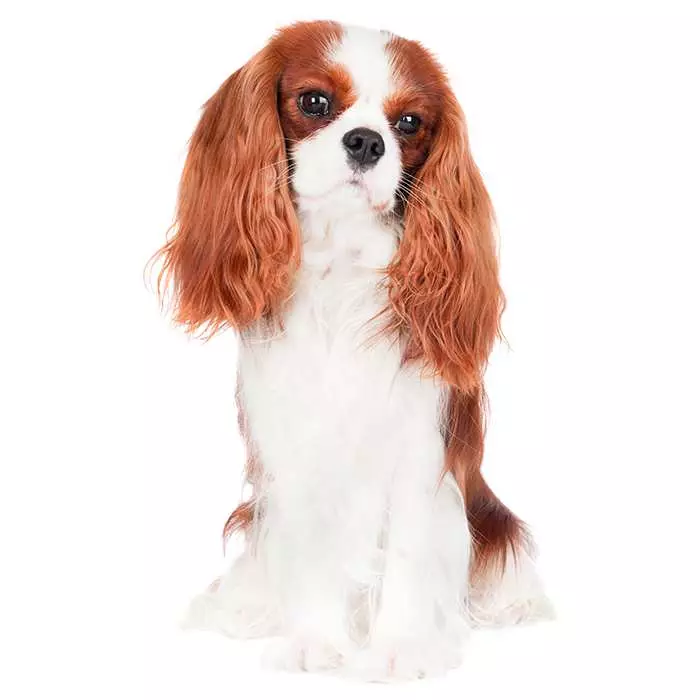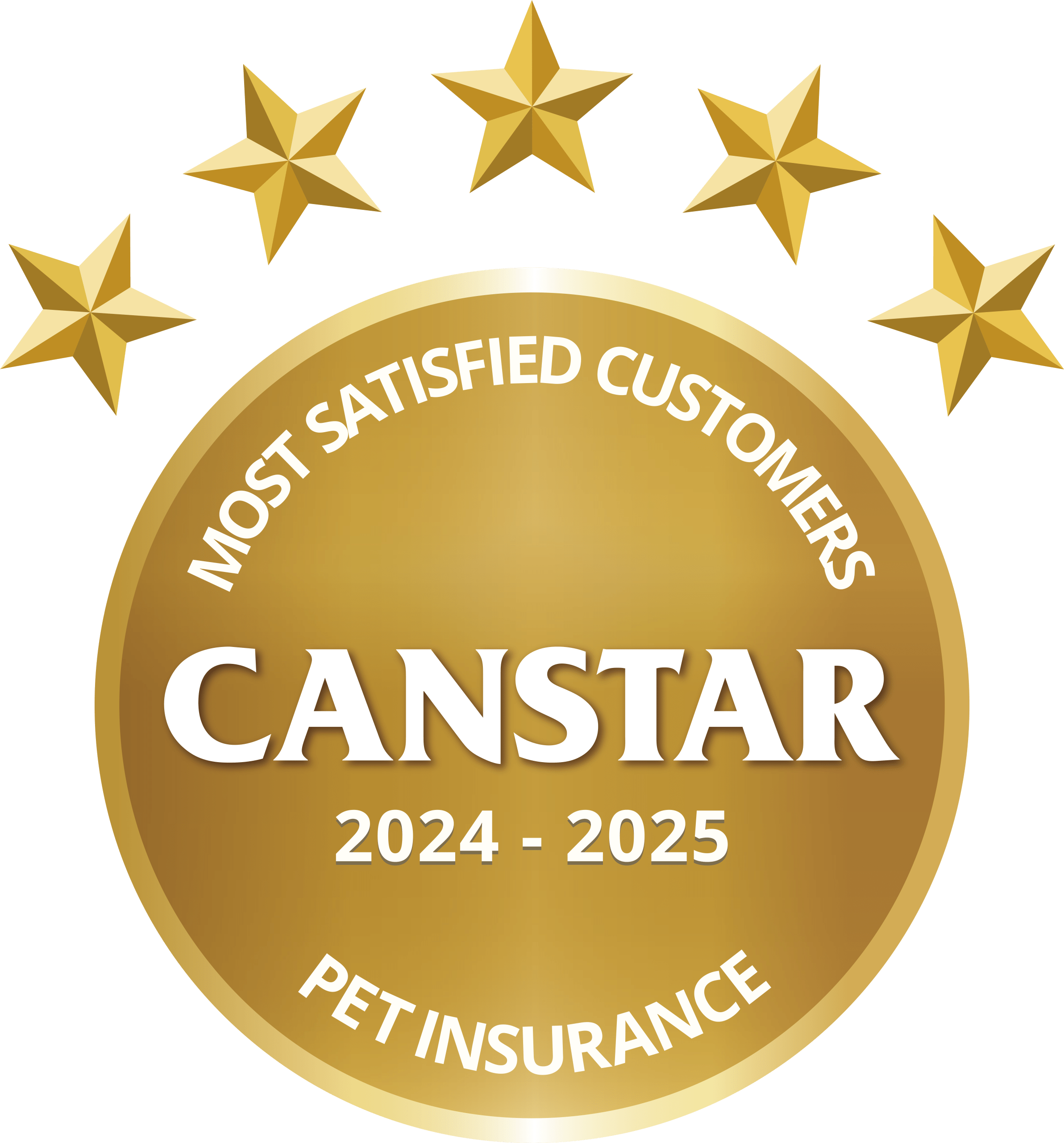Labradoodle


| Recommended for | Active families & individuals |
| Breed Classification | Hybrid / designer breed |
| Other names | Australian Labradoodle |
| Lifespan | 12-14 years |
| Size | Large, medium & miniature |
| Temperament | Friendly, happy, comical |
| Intelligence | Very high |
| Tendency to bark | Medium |
| Maintenance Level | Medium |
| Health Risk | This breed has an around average probability of having health issues in its lifetime, hence it is one of the more affordable breeds to insure. |
Insuring a Labradoodle?
Get our award-winning Nose-to-Tail Cover with up to $30k annual benefit limit, up to 90% of eligible vet bills back, and no sub-limits.
Get a quick quote
Is this breed right for you?
Try our breed selector quiz to find out your best matching breed!
Insuring a Labradoodle?
Get our award-winning Nose-to-Tail Cover with up to $30k annual benefit limit, up to 90% of eligible vet bills back, and no sub-limits.
Get a quick quote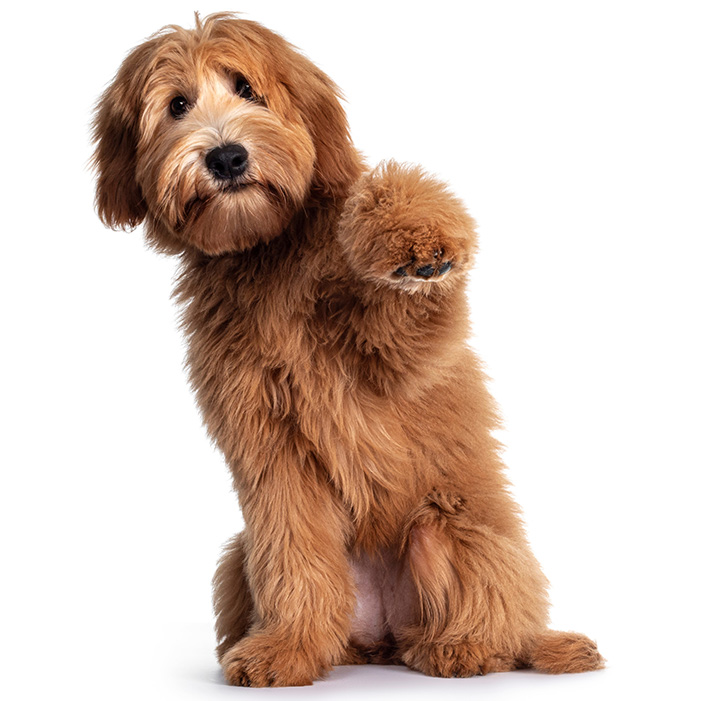
Breed history of Labradoodles
Labradoodles were first bred by Wally Conron of the Australian Guide Dog Association in 1989 as an allergy friendly seeing eye dog. The organisation was approached by a blind woman from Hawaii who requested a guide dog that would not cause allergies. A number of hypoallergenic Poodles failed to make suitable guide dogs, so Wally Conron requested permission to cross breed a Labrador – a highly successful guide dog breed – with a Poodle.
The new breed, aptly named the Labradoodle, was put into guide dog training and 29 out of the 31 dogs entered passed the course. Additionally, they proved to shed very little, making the new breed hypo-allergenic and suitable for most people with allergies to dog hair.
The Labradoodle was a real success story, and almost overnight the breed’s popularity sky-rocketed. To meet this sudden demand, many unofficial and unregistered breeders began producing Labradoodles that were not up to the standard the original breeders intended. Throughout the 1990’s the Labradoodle developed by these breeders was unpredictable in nature, intelligence and health.
After the Rutland Manor Labradoodle Breeding and Research Centre was set up in Victoria, the breed began to be standardised and carefully crosschecked for any health issues. Despite these measures, when purchasing a Labradoodle, it is imperative to scrutinise the breeder’s credentials, as well as the parent animals’ lineage and health.
The popularity of the Labradoodle outside of Australia has grown dramatically since they were first introduced in 1989 and they are especially popular in the United States as a family companion. Labradoodles are still bred by the AGDA as demand requires it.

Physical description of Labradoodles
The standard Labradoodle is a large-sized dog, a cross between the Labrador and the standard Poodle. There are also medium and miniature sized Labradoodles that were bred from medium and miniature sized Poodles.
Some Labradoodles look more like Poodles, while others have a stronger resemblance the Labrador. This is also reflected in their distinctive coats, which may be thick and wavy or tightly curled, with either a woolly or a fleecy feel. The length of the coat can reach 10 to 15 cm.
Like many poodle crosses, Labradoodles have inherited the hypoallergenic fur qualities of the poodle. This means that most don’t shed, or shed lightly, and are not likely to produce an allergic reaction in people who are allergic to dog hair.
| Weight range | Standard: 23 to 30 kg |
| Height range | Standard: 53 to 63 cm |
| Colours | Brown, black, silver, gold, cream, red, chocolate |
| Coat length | Medium to long |
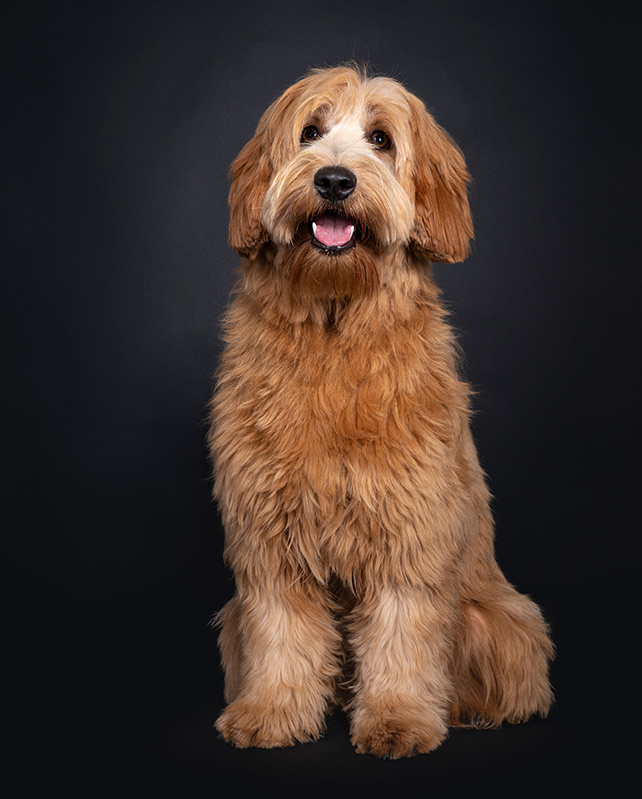
Labradoodle personality and temperament
The Labradoodle has been developed to reflect the very best characteristics associated with both the Labrador and Poodle breeds. The placid and care-free nature of the Labrador, paired with the energetic and playful character of the Poodle, makes for an enthusiastic and joyful companion with a cheerful, good-natured temperament.
Great for first time dog owners or families, the Labradoodle’s temperament is loving and friendly. They will greet friends with affection and their family with steadfast loyalty. Highly affectionate and loyal to their owners, they are best suited to living indoors with a family who will shower them with love and attention. Described as one of the best companion animals available, Labradoodles love to play, obey and please, but also to be active with the family, and enjoy a good swim in any water. They love to be involved in games and family events, and can develop separation anxiety and behavioural problems if left to their own devices for any extended period of time..
The extremely intelligent Labradoodle adjusts well to new situations. Sociable, comical, joyful and energetic when free, yet is soft and quiet when handled, the Labradoodle displays an intuition about their family members or handler’s current emotional state or needs. This ability to “know” a key factor that has made the Australian Labradoodle an excellent dog for individuals with special needs. They are extensively used in therapy work because of their easy going and gentle nature, paired with their high level of intelligence and awareness.
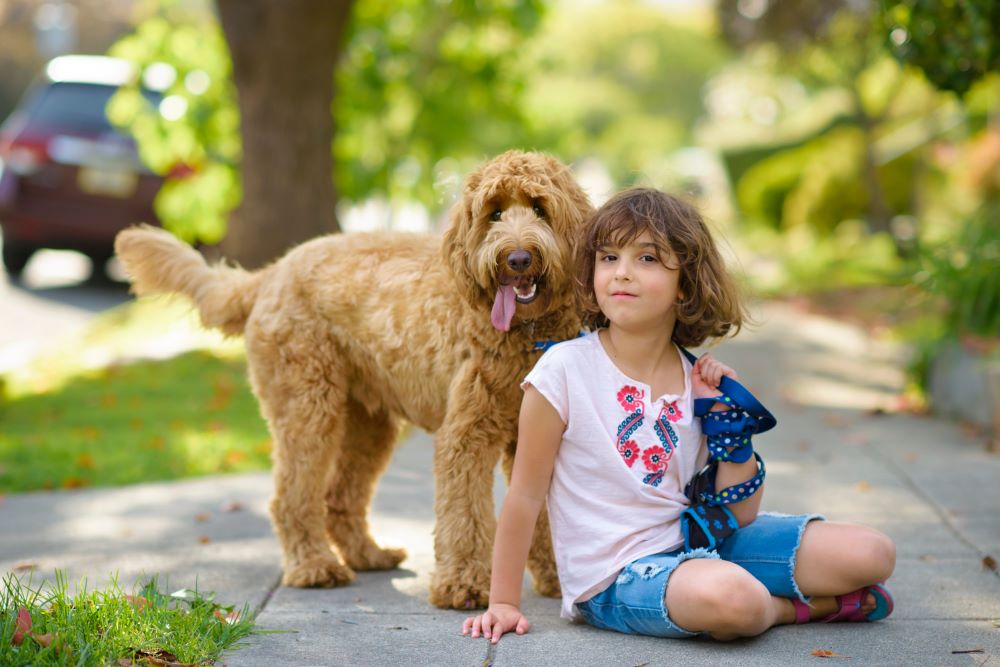
Labradoodles with kids and other pets
Labradoodles have a fantastic reputation for high levels of tolerance for children. They are exceedingly patient with children, making them ideal companions for young families, as well as for the elderly and the disabled.
Small children may find the larger Labradoodle a bit of a handful during playtime and, under the age of eight, should be carefully supervised.
Labradoodles are social and friendly towards dogs and other animals. They are renown for their patience and their ability to cohabitate peacefully with other pets in the home. Early socialisation as a puppy is a great way to ensure complete tolerance.
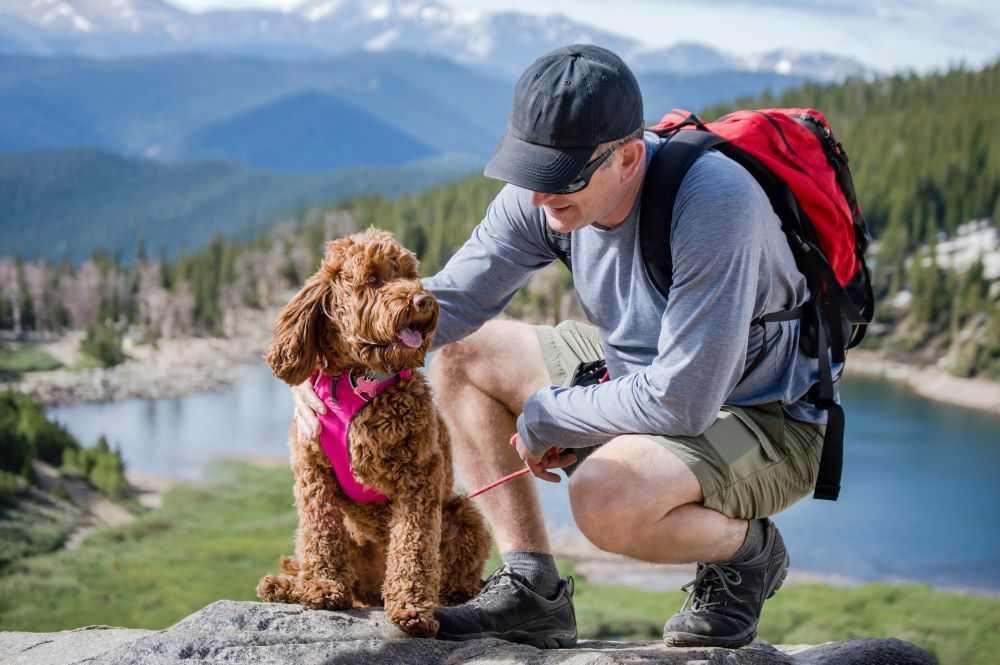
Labradoodle training and exercise
The Labradoodle is an energetic and very intelligent dog that needs regular physical and mental stimulation. If a Labradoodle isn’t taken for walks at least once a day, and played with regularly, boredom and mischievousness will set in and destructive habits may form.
Generally considered as easy to train, the Labradoodle is eager to please and will respond well to reward-based instruction and gentle, persistent and consistent discipline. With the humans clearly established as its pack leaders, the Labradoodle will quickly become a well-behaved and obedient member of society.
| Energy level | High |
| Exercise requirements | Medium to high |

Labradoodle feeding and nutrition
The Labradoodle should do well on a high-quality, well-balanced diet that is appropriate to the dog’s age (puppy, adult, or senior), size and activity level.
Although they don’t tend to be greedy eaters, Labradoodles may become overweight, so it’s important to monitor their calorie consumption and weight level and adjust their diet accordingly.
To avoid gastric dilation and volvulus or ‘bloat’, don’t feed your Labradoodle large meals. Spread the portions out during the day over two or three smaller meals and feed them at least an hour before or after any rigorous exercise.
Check with your vet if you have any concerns about your dog’s weight or diet.
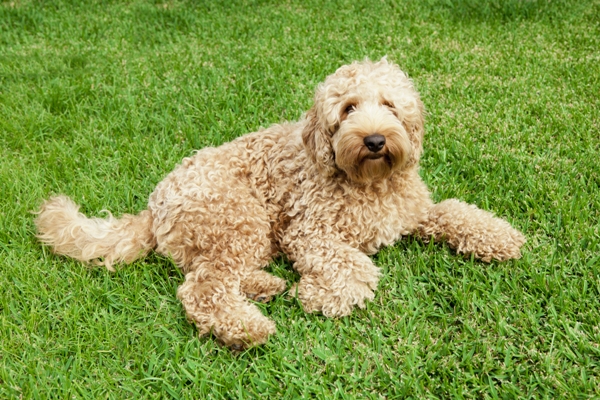
Labradoodle care and grooming
The Labradoodle coat is non-shedding and easy to manage, though regular grooming is required. Home brushing three to four times per week will help keep the coat in good condition and prevent matting.
Once the adult coat is established at around 12 to 14 months of age, professional grooming and trimming of the coat is recommended every two to three months or so. In fact, the curlier the coat, the more frequently the Labradoodle will need to be groomed and trimmed.
Because Labradoodles love to swim, their curly coats can quickly get matted, muddy and messy, so bathing may be performed as required. Avoid over-washing as this can damage the oils in their coats.
Health issues for Labradoodles
- Hip Dysplasia, although not common, does occur in the breed. This is when the ball of the hip joint does not develop normally and as a result fails to fit snugly into the hip socket, leading to possible lameness over time.
- Epilepsy is a general term for neurological disorders that bring on sudden and repeated seizures or fits. A severe condition, epilepsy can usually be controlled through the careful use of proscribed medication. Epilepsy is characterised by a pattern of repeated seizures over time. Although it affects only 3% of dogs, Labradoodles are prone to epilepsy.
- Progressive Retinal Atrophy (PRA) is a family of inherited eye diseases that can occur in Labradoodles and can lead to blindness. The nerve cells at the back of the eye degenerate over time and will cause cataracts to form. The first sign of progressive retinal atrophy is usually night blindness; this progresses to total blindness over a period ranging from months to years. If there is still vision in the eye, corrective surgery may be an option.
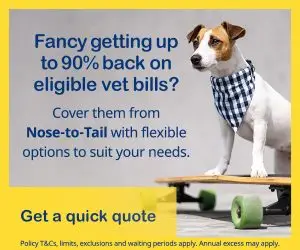
- Hypothyroidism, or under-active thyroid, is a condition where the thyroid gland doesn’t produce adequate amounts of thyroid hormone, resulting in a slower metabolic rate. Some symptoms of Hypothyroidism include abnormal weight gain, dry skin, hair loss, ear infections, and lethargic behaviour. Hypothyroidism is the most common hormone imbalance occurring in dogs, particularly affecting medium to large sized breeds, including the Labradoodle.
- Diabetes Mellitus is a metabolic disease that occurs when the body cannot regulate the sugar levels in the blood adequately. Type 1 diabetes occurs when there are insufficient levels of insulin in the body; Type 2 diabetes occurs when the dog has an inadequate response to insulin. Symptoms include a much higher appetite for water and excessive urination. Diabetes can be controlled with a change in diet and medication.
Not all conditions are covered by Pet Insurance. For details of Bow Wow Meow Pet Insurance cover, refer to the Product Disclosure Statement.
Thinking about insuring a Labradoodle
Thinking about insuring a Labradoodle
Learn moreThinking about insuring a Labradoodle
Learn moreFree engraved pet ID tag on sign up3
Customer Satisfaction
21 day cooling off
Easy to use Pet Portal

GapOnly® in vet claims
MORE INFORMATION
Australian Labradoodle Association Inc: https://www.laa.org.au/

